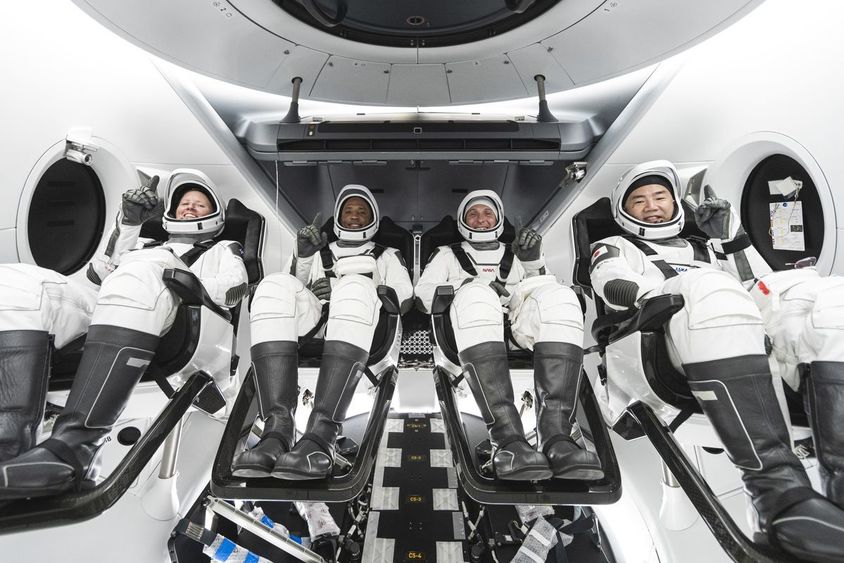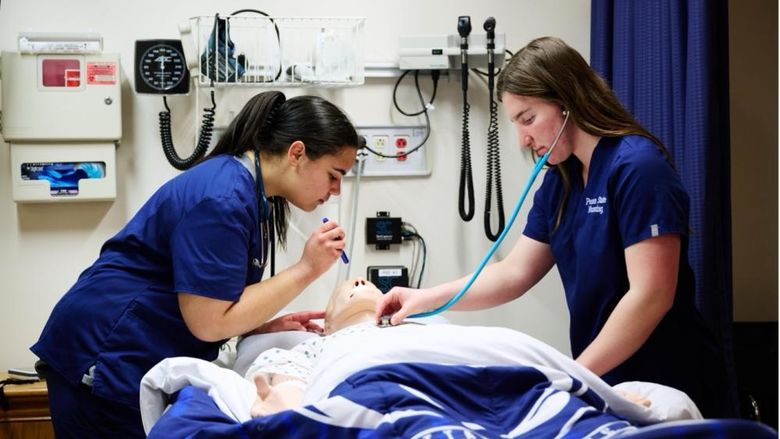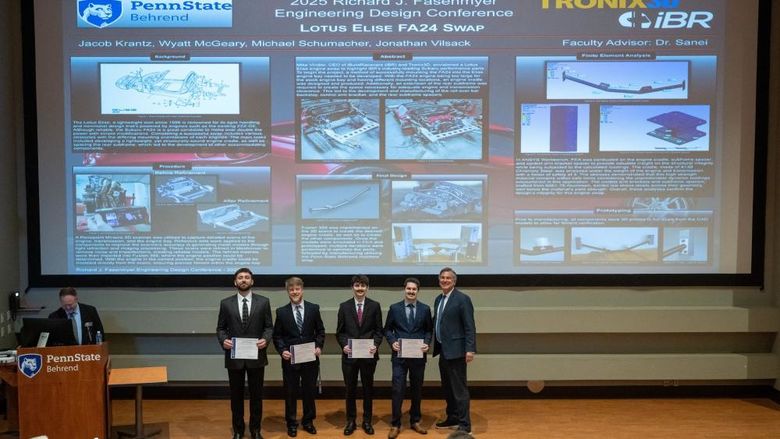
The crew of the SpaceX capsule Resilience prepares to launch on a six-month mission to the International Space Station.
ERIE, Pa. — The Nov. 15 launch of the Crew Dragon capsule "Resilience" — the first full commercial crew flight to the International Space Station — was a bargain for NASA, even at a purported cost of $55 million per astronaut. The same trip on a Russian-built Soyuz rocket would have cost $86 million.
The Crew Dragon was designed and launched by SpaceX, which developed the first rockets with reusable components. That reduced the cost of each launch, meaning SpaceX can fly more often, putting more people in orbit. The effects already are being felt on the ISS, where there are now more crew members than sleeping berths. Commander Mike Hopkins is bunking in the Resilience.
We asked Jim Gavio, director of the Yahn Planetarium at Penn State Behrend, about NASA’s partnerships with private companies, the move toward space tourism and the plan to put astronauts back on the moon in 2024.
Q: What’s the significance of this latest mission, which was the first to ferry astronauts to the ISS on a commercial vehicle?
Gavio: It’s a very big step, but it’s part of a much bigger plan, which is to get astronauts back to the moon, and eventually to Mars. They’re still proving they can do it, but so far, it’s working, and that’s generating a lot of excitement. When you see these SpaceX rockets come back down and land on the launch pad, it’s like watching something out of “Star Trek.”
Q: What’s the next launch we should watch for?
Gavio: Boeing will have an unmanned test flight of its “Starliner” capsule very soon. Next summer, they’ll have a crewed flight to the ISS. Astronaut Mike Fincke, who visited Behrend in 2018, is scheduled to be on that mission. If it works according to plan, we’ll have two private companies working with NASA in a major way, and we won’t have to pay the Russians to take us up, as we have since 2011. At that point, we’ll be full speed ahead.
Q: How have the private companies accelerated the timeline?
Gavio: Without them, we’d be so much further behind. NASA no longer has to fund everything itself. SpaceX can do a lot of these flights at a much lower cost, because they can reuse their first-stage rockets. Because of that technology, the taxpayers save money, and NASA can concentrate on the big, long-term goals.
Q: What’s at the top of the list, for NASA?
Gavio: They’re focused on getting us back on the moon. NASA has contracted with about 14 American companies, which will do a lot of the early work: Sending up rovers, and mirrors, and putting all the necessary equipment in place. That preliminary work is allowing NASA to focus on the core of the mission, which is the rocket that will get us there.
Q: An American hasn’t stood on the moon since 1972. Why should we go back?
Gavio: For a while, we didn’t see the need. It was like, “OK, we did that. It’s a dead, dry place.” But we have learned so much about the moon since then. We know there’s water there. That means there’s hydrogen, which can be used for fuel, oxygen to breathe and water to drink. We’ve even discovered gold and platinum on the moon. All of that saves money, time and effort, since we won’t need to bring all these supplies with us when we go.
There is a better reason to go back, however: The moon is a proving ground. What we learn there will make it easier for us to one day go to Mars.
Q: How likely are we to have tourists in space by then?
Gavio: Russia already has sent a number of civilians into space. I expect we’ll see even more of that, going forward. SpaceX is building a large spaceship that will be able to take people around the moon. They won’t land there, but they’ll orbit and come back.
That’s exciting, but the technology also could have applications closer to home. (SpaceX CEO) Elon Musk says he can land a rocket on any hard surface in the solar system. That includes the Earth. If that works, he could very quickly take you to the other side of the globe. He could land you in Japan in a fraction of the time it now takes to get there. That would be a game-changer.
Robb Frederick
Director of Strategic Communications, Penn State Behrend






